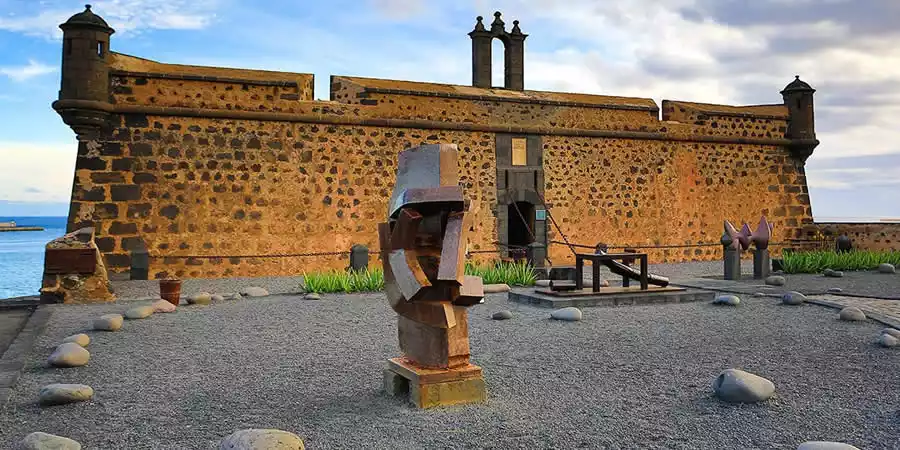
This The fortress was built between 1776 and 1779 during the reign of the Bourbon monarchy of Carlos III. At that time there were three military buildings in Lanzarote: the Castillo de Santa Bárbara in Teguise, the Castillo de San Gabriel in Arrecife and the Torre del Águila in the south of the island.
Its construction was aimed at protecting Puerto Naos and give work to the inhabitants of Lanzarote. During the three years that its construction lasted, it served to employ a good part of the population, who had had to abandon their villages due to the eruptions Timanfaya, which is why it was known as the Fortress of Hunger.
The The floor plan of the building is semicircular with the curved side facing the sea. Its solid appearance is conditioned by the use of ashlars and masonry.
Currently houses the International Museum of Contemporary Art at the initiative of the artist from Lanzarote César Manrique, who reformed it and enabled for it. Inside we can find works by Tápies, Mompó or Manrique himself.